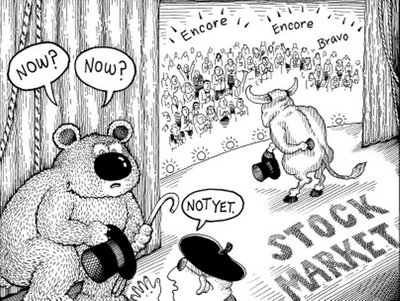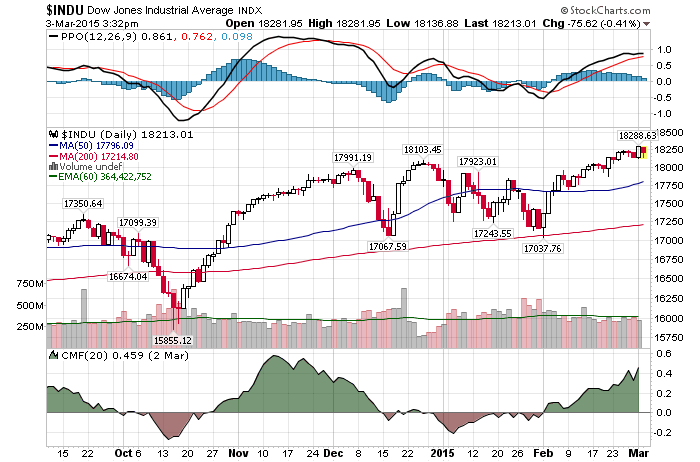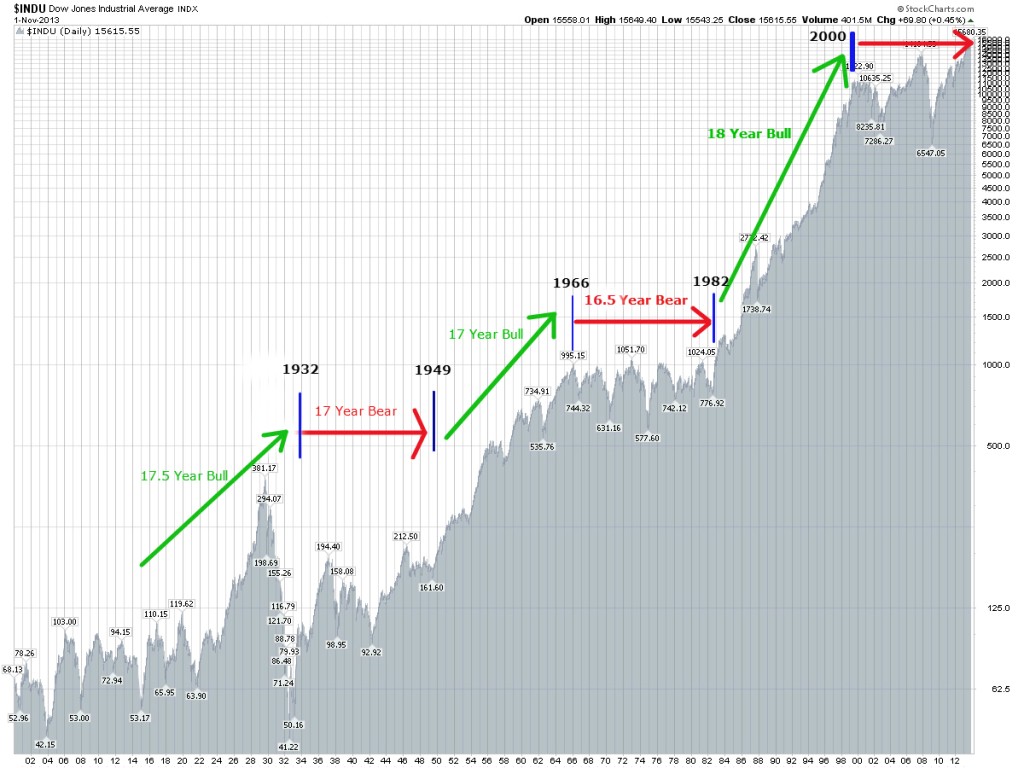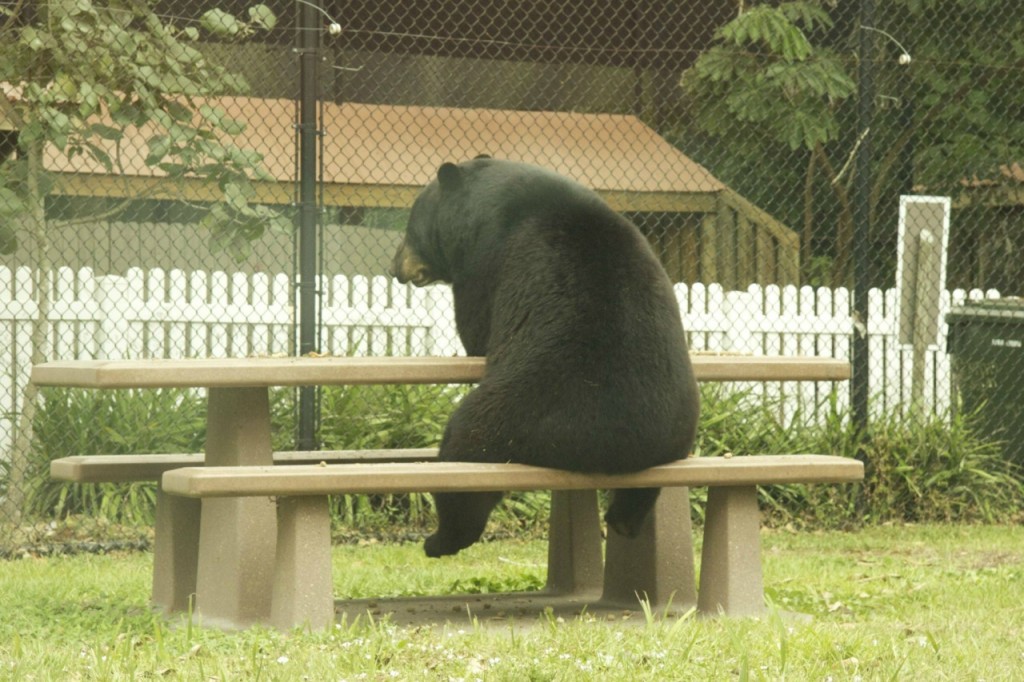
The article below presents us with a very good overview of how you should approach today’s stock market. I highly recommend that you give it a few minutes of your time.
It brings up an important issue. Will the bear market of 2014-2017 (as per our forecast) start with a bang or a whimper?
It all depends on your definition of a bang. If you define a bang as a quick decline of about 10% or so (on the Dow), it might. If your bang is more like an 1987 type of a crash of 20-25% within a relatively short period of time, it’s not going to happen.
As per our mathematical and timing work the bear market of 2014-2017 will be structurally similar to the bear market of 2000-2003. A lot of volatility, a lot of ups/downs and a general downtrend. A very difficult market. It will NOT be similar to a more directional bear market of 2007-2009.
In short, this bear market will drive all….. bulls, bear, markets pundits and everyone in between up the wall. I continue to believe that only those with proper market timing will be able to walk away with any gains. Everyone else is likely to be extremely frustrated by the experience. If you would like to learn more, please CLICK HERE.
Did you enjoy this article? If so, please share our blog with your friends as we try to get traction. Gratitude!!!

Will The Bear Market Start With A Bang Or A Whimper? The Answer Will Shock You Google
MIAMI (MarketWatch) — This is how bear markets begin.
Two months ago, I pointed out that the U.S. stock market had topped out and was going through a churning process.
Since that observation, the Dow Jones Industrial Average DJIA -0.61% has risen a bit higher but the Nasdaq COMP -0.72% and Russell 2000 RUT -1.61% indexes have dropped below their 50-day and 100-day moving averages. It’s only a matter of time before the Dow follows.
Bond yields may signal a warning
Yields on 30-year Treasury bonds have fallen this year, which could be a signal that economic growth will not heat up anytime soon.

Bear markets start with a whimper or a bang. When it starts with a bang, the first clue will be a major break in the market that no one can correctly explain. That will eventually be followed by a correction (or crash), and everyone will know that something bad has happened. The indexes will fall by double digits, investors will panic, and stocks get slaughtered.
Investors will be told to stay calm and not sell — but they will when the financial pain gets too great. They are also told that the market always comes back (although not all stocks will). Anxiety turns to fear as the market plunges. After a correction or crash, investors look for scapegoats while commentators ask, “Who could have known?” (Hint: Those willing to act on the clues and indicators were out of the market well before the most damage was done.)
But when a bear market starts with a whimper, it confuses nearly everyone. A meandering, volatile market is frustrating. At first, bulls are hopeful that the market will keep going up, but eventually, the market tops out and retreats.
I call this “death by a thousand pullbacks.” Instead of new highs, the market will make a series of short-lived but painful pullbacks. At first, the buy-on-the-dip investors will enter the market with new orders. As the bear market continues, the buy-on-the-dip strategy will stop working (along with most other long strategies).
Typically, a market making new highs is a healthy sign. In a looming bear market, new highs on lower volume is a red flag. That’s happening now. Also, leading technology stocks have gotten smashed, replaced by new leaders. After these new leaders fail there will be nowhere to hide.

You may have noticed that some financial analysts on television seem confused. One week they make a bearish prediction, then reverse course. This is typical as the market transitions to a bear market.
Many commentators are confused because what has worked in the past stops working. Also, the behavior of other assets such as bonds and commodities don’t make sense. That’s a clue the market is entering a danger zone. Another red flag: Investors are buying stocks on margin at levels higher than in the previous peak years of 2008 and 2000. Whenever margin reaches excessive levels, bad things happen to the stock market.
Short-term, the market could churn higher. As prices rise, a lot of people will be fooled, especially if the Dow continues to make all-time highs. Many investors will not sell because they think they can either get out in time, or buy and hold through the next pullback or correction. The most aggressive investors will buy on the dip because stocks “are so cheap.” I’ve heard some financial commentators recommend that retail investors avoid a bear market by being “better stock pickers.” Ridiculous.
Here’s some advice: Rather than trying to be a stock-picking genius, before a bear market shreds your portfolio, think about getting out of the market even if you’re early. I’d rather give up 5% potential upside than risk 20% downside (or more).
Right now, the strongest case for the bulls is the Fed. And yet, in the history of the stock market, no institution has been able to prevent a bear market. You can’t fool Mother Market.

Waiting for the pivot point
Eventually there will be a pivot (or inflection) point, and the market will snap. No one knows what the catalyst will be. It could be an economic event, a geopolitical crisis, or a spike in interest rates.
When the market snaps, nearly everyone but the biggest believers will realize the market is in trouble. By that time, there will be a mad rush for the exits as everyone attempts to sell at once.
No matter how many times you tell investors to be wary of a dangerous market, most don’t listen. Based on the clues, indicators, and personal observations, crunch time is getting closer. No one knows when, but I am certain: a bear market is inevitable — sooner rather than later. This is not doom and gloom. It is market reality.














